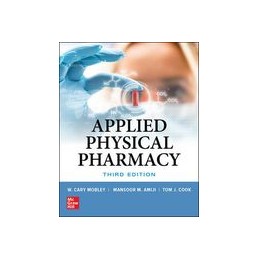Publishers Note:: Products purchased from Third Party sellers are not guaranteed by the publisher for quality, authenticity, or access to any online entitlements included with the product.
A complete practice-oriented introduction to physical pharmacy
Written to clearly and simply explain how drugs work, this textbook explores the fundamental physicochemical attributes and processes important for understanding how a drug is transformed into a usable product that is administered to a patient to reach its pharmacological target, and then exists the body.
Applied Physical Pharmacy, Third Edition begins with a review of the key biopharmaceutics concepts of drug liberation, absorption, distribution, metabolism, and excretion. These concepts, and others, set the framework for the subsequent chapters that describe physicochemical properties and process related to the fate of the drug. Other physical pharmacy topics important to drug formulation are discussed in the chapters that follow, which describe dispersal systems, interfacial phenomena, and rheology. The textbook concludes with an overview of the principles of kinetics that are important for understanding the rates at which many of the processes discussed in previous chapters occur.
Chapters in this Third Edition retain the acclaimed learning aids of previous editions, including Learning Objectives, Practice Problems, Key Points, and Clinical Questions. In order to be of greater value to the pharmacy student, more clinical questions have been added, and many tables have been updated with more current products and excipients.


 Dostawa
Dostawa
 Płatność
Płatność
 Zwroty
Zwroty
